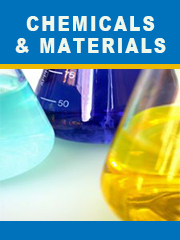Report overview
Silicone refers to a compound whose molecular structure contains Si-C bonds and at least one organic group is directly connected to a silicon atom. The basic raw materials for the production of organic silicon mainly include metal silicon, methanol and hydrogen chloride. Starting from silicone monomers and their intermediates, through various reactions, or adding various fillers and additives, they are further processed into various end products such as silicone oil, silicone rubber, and silicone resin.
This report aims to provide a comprehensive presentation of the global market for Silicone Recycling, with both quantitative and qualitative analysis, to help readers develop business/growth strategies, assess the market competitive situation, analyze their position in the current marketplace, and make informed business decisions regarding Silicone Recycling. This report contains market size and forecasts of Silicone Recycling in global, including the following market information:
Global Silicone Recycling Market Revenue, 2018-2023, 2024-2029, ($ millions)
Global top five companies in 2022 (%)
The global Silicone Recycling market was valued at US$ 57 million in 2022 and is projected to reach US$ 76 million by 2029, at a CAGR of 4.1% during the forecast period. The influence of COVID-19 and the Russia-Ukraine War were considered while estimating market sizes.
The main manufacturers of Silicone Recycling are ECO USA, GW United Chemicals GmbH and TerraCycle, etc. The top five manufacturers account for about 80% of the share. Asia-Pacific is the largest market with about 55% share, followed by North America and Europe with more than 20% and 15% share. Physical Crushing is the largest segment with about 80% share. Industrial Waste Recycling is the largest application with a share of about 67%.
We surveyed the Silicone Recycling companies, and industry experts on this industry, involving the revenue, demand, product type, recent developments and plans, industry trends, drivers, challenges, obstacles, and potential risks.
Total Market by Segment:
Global Silicone Recycling Market, by Recycling Method, 2018-2023, 2024-2029 ($ millions)
Global Silicone Recycling Market Segment Percentages, by Recycling Method, 2022 (%)
Physical Crushing
Chemical Cracking
Global Silicone Recycling Market, by Recycling Source, 2018-2023, 2024-2029 ($ millions)
Global Silicone Recycling Market Segment Percentages, by Recycling Source, 2022 (%)
Industrial Waste Recycling
Post-consumer Recycling
Global Silicone Recycling Market, By Region and Country, 2018-2023, 2024-2029 ($ Millions)
Global Silicone Recycling Market Segment Percentages, By Region and Country, 2022 (%)
North America
US
Canada
Mexico
Europe
Germany
France
U.K.
Italy
Russia
Nordic Countries
Benelux
Rest of Europe
Asia
China
Japan
South Korea
Southeast Asia
India
Rest of Asia
South America
Brazil
Argentina
Rest of South America
Middle East & Africa
Turkey
Israel
Saudi Arabia
UAE
Rest of Middle East & Africa
Competitor Analysis
The report also provides analysis of leading market participants including:
Key companies Silicone Recycling revenues in global market, 2018-2023 (estimated), ($ millions)
Key companies Silicone Recycling revenues share in global market, 2022 (%)
Further, the report presents profiles of competitors in the market, key players include:
ECO USA
GW United Chemicals GmbH
TerraCycle
NewAge Industries
Supreme Silicones
Global Serve Pte Ltd (TGS)
Silikids (Gosili)
Munch Cupboard
Simple Ecology
Harmony Industries
Outline of Major Chapters:
Chapter 1: Introduces the definition of Silicone Recycling, market overview.
Chapter 2: Global Silicone Recycling market size in revenue.
Chapter 3: Detailed analysis of Silicone Recycling company competitive landscape, revenue and market share, latest development plan, merger, and acquisition information, etc.
Chapter 4: Provides the analysis of various market segments by recycling method, covering the market size and development potential of each market segment, to help readers find the blue ocean market in different market segments.
Chapter 5: Provides the analysis of various market segments by recycling source, covering the market size and development potential of each market segment, to help readers find the blue ocean market in different downstream markets.
Chapter 6: Sales of Silicone Recycling in regional level and country level. It provides a quantitative analysis of the market size and development potential of each region and its main countries and introduces the market development, future development prospects, market space of each country in the world.
Chapter 7: Provides profiles of key players, introducing the basic situation of the main companies in the market in detail, including product sales, revenue, price, gross margin, product introduction, recent development, etc.
Chapter 8: The main points and conclusions of the report.
